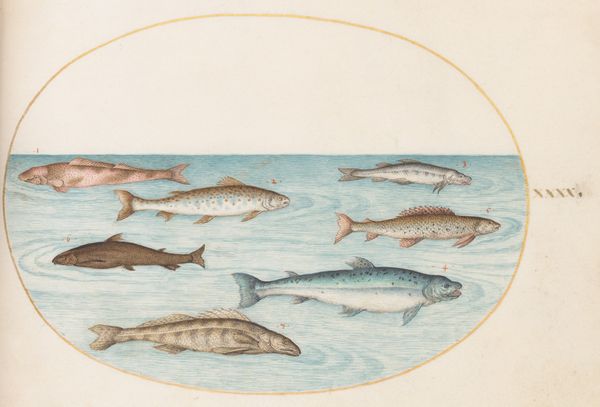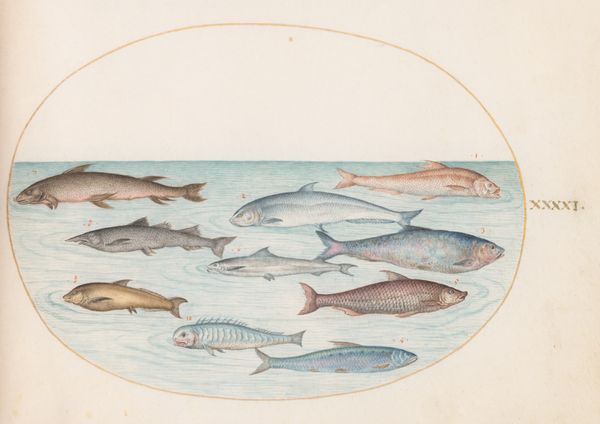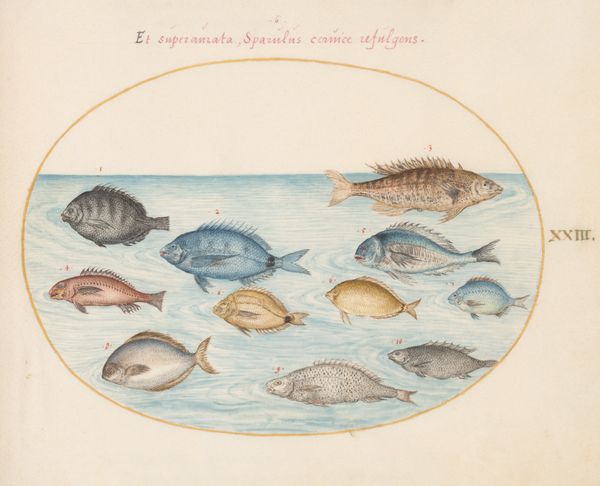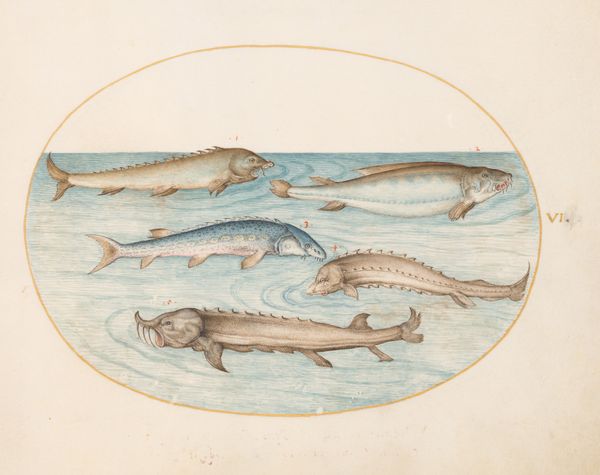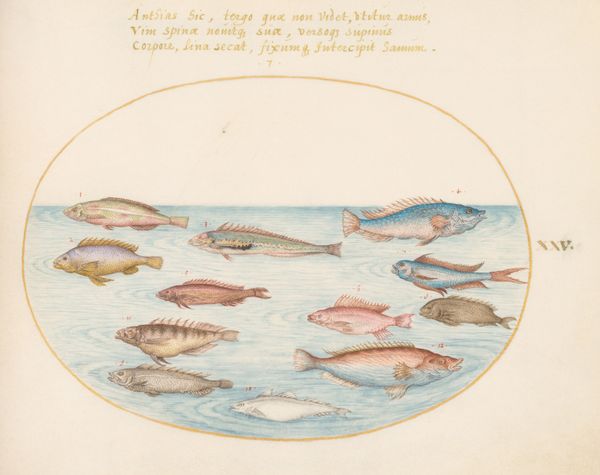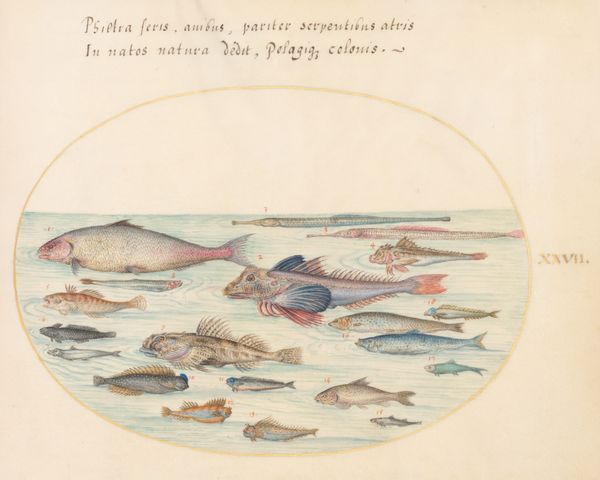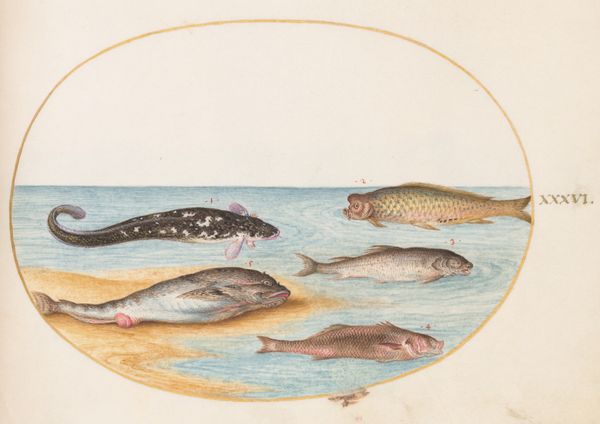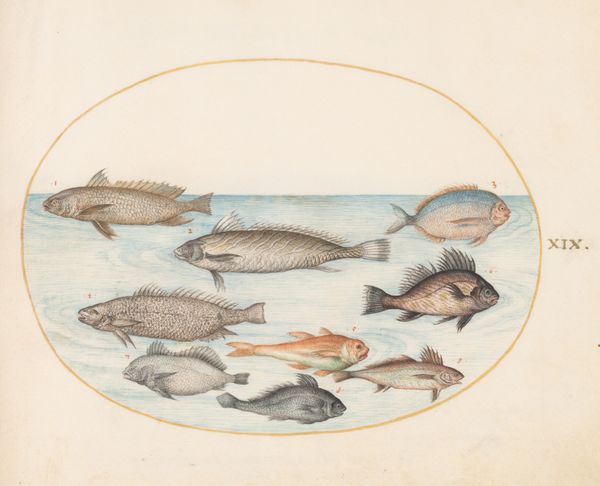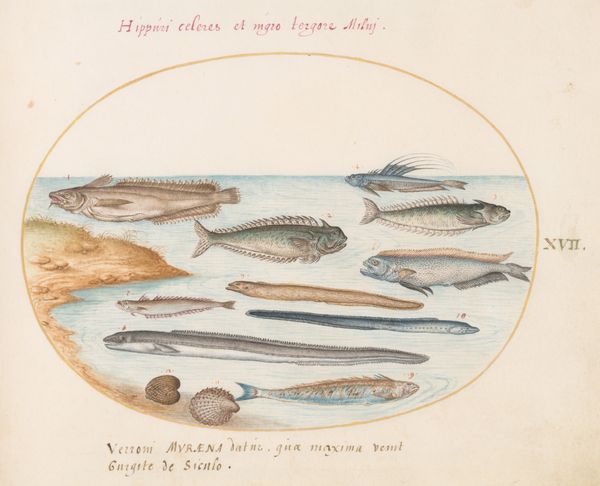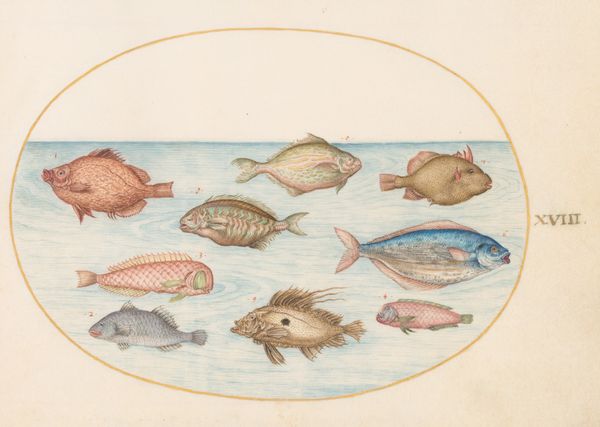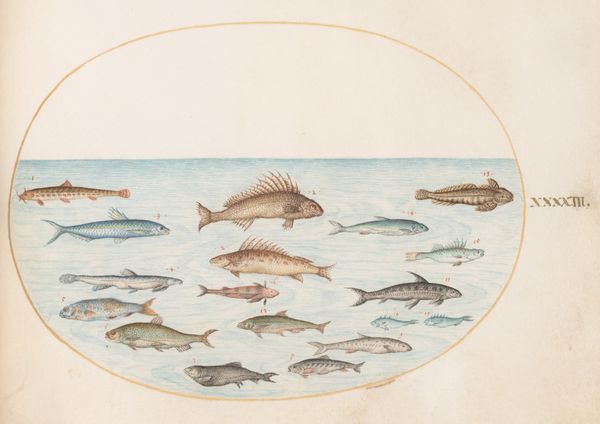
drawing, coloured-pencil
#
drawing
#
coloured-pencil
#
water colours
#
11_renaissance
#
personal sketchbook
#
coloured pencil
Dimensions: page size (approximate): 14.3 x 18.4 cm (5 5/8 x 7 1/4 in.)
Copyright: National Gallery of Art: CC0 1.0
Curator: This artwork before us is Plate 26: Gurnards, Dragonets, and Other Fish, created circa 1575-1580 by Joris Hoefnagel. It's a drawing rendered with colored pencils. Editor: It's like stumbling upon a secret underwater society, so meticulously documented, yet slightly alien. These aren’t just fish; they're characters in some silent Renaissance play! Curator: Indeed. Hoefnagel's work exists at the intersection of art, science, and commerce during the late Renaissance. These studies of flora and fauna often appeared in emblem books used by the wealthy and powerful to assert status and influence, reflecting emerging power structures during the expansion of global trade and colonization. Editor: I get a distinct impression these aren’t merely scientific renderings, it's as if he infused personality into each fishy face. The color choices! A surprising range of pinks and blues…almost theatrical. Like he's plucked them right out of a dream. Curator: Precisely, though the image seems fanciful, remember that naturalism was a crucial aspect of Renaissance science. However, accuracy could easily be sacrificed when dealing with exotic and unfamiliar subjects that were previously unknown and often inaccessible, hence the liberties taken here, with an eye toward an audience of private collectors, apothecaries, and scholars. Editor: Makes you wonder about the original context. It's so meticulously detailed, so carefully rendered…what stories do these fishes whisper, especially given today's climate crisis? Curator: I would argue that now they invoke different themes: questions surrounding bio-piracy, ecological awareness and preservation, who controls the narrative of nature. We have become increasingly concerned about ownership and commodification as we engage with globalization. Editor: Thinking about it…these little watercolors offer this gorgeous, peculiar look into how the world *was* viewed, simultaneously inviting reflection upon *our* relationship with the natural world. The little stage on which Hoefnagel sets these aquatic dramas keeps looping back to issues of framing, knowledge, and ultimately, what we choose to see. Curator: Yes, by considering how images are contextualized and mobilized historically, we start to unravel their implicit assumptions and explore ways toward reimagining a more equitable future. Editor: In short, don't simply look, swim deep.
Comments
No comments
Be the first to comment and join the conversation on the ultimate creative platform.


